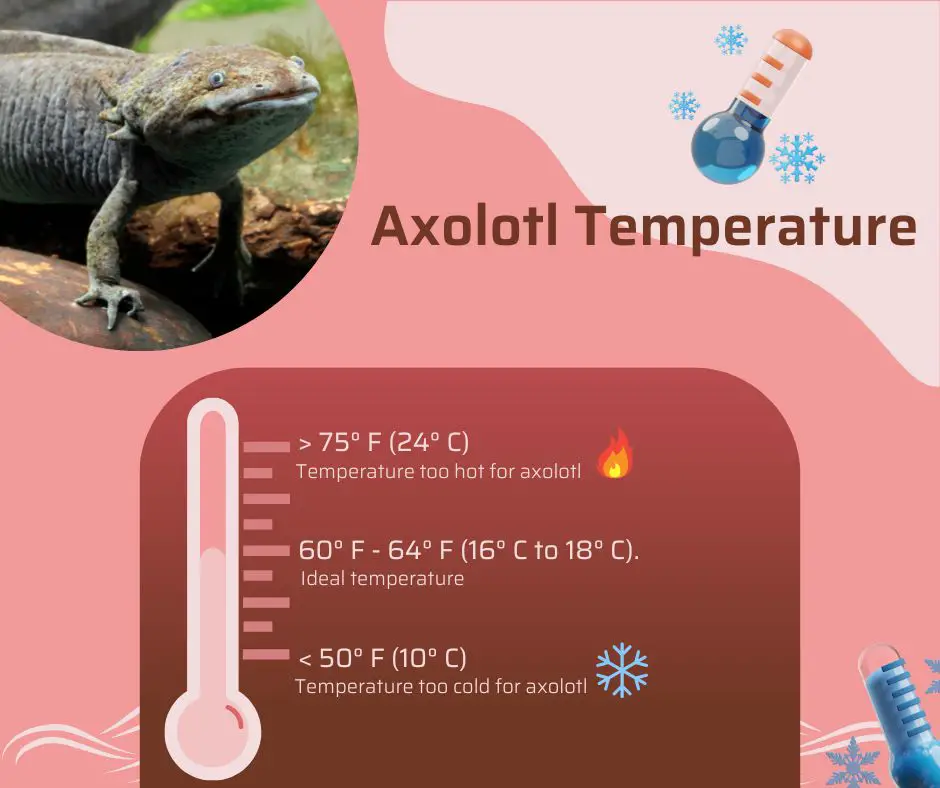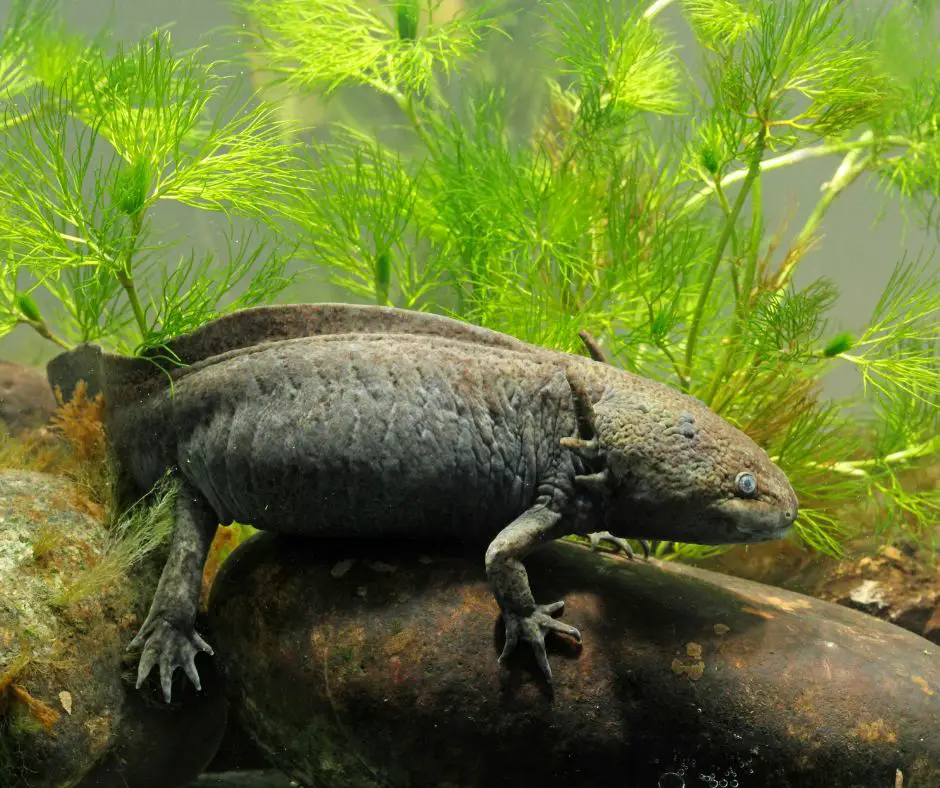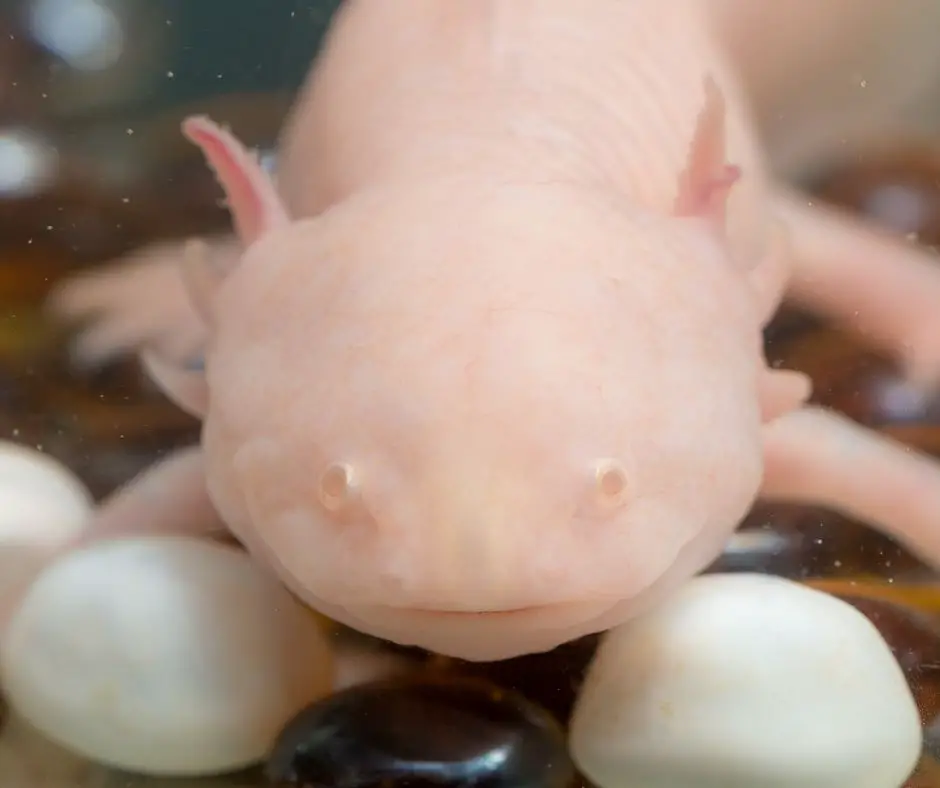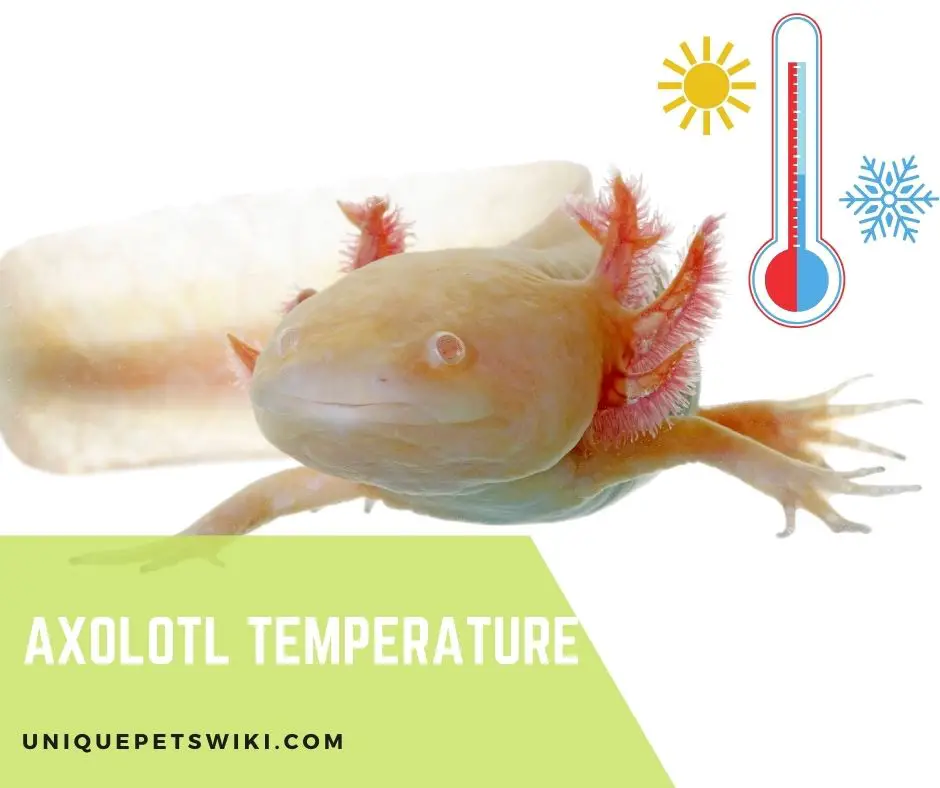For a species of animal that can live both on land and in water, maintaining an ideal aquarium temperature can be challenging. The axolotls are amphibians which means that they have both gills and lungs with which they can breathe.
Usually, when amphibians are young, they live underwater and have gills with which they breathe, but as adults, they lose their gills, develop lungs, and can live on land.
However, axolotls cannot live outside of the water and are rarely seen outside of the water for an extended period; it is simply not natural for them to do so.
Therefore, being primarily aquatic animals, what is the best temperature to keep them? Since axolotls live in cold water lakes in the Mexican valley, their ideal water temperature is 60-64° F.
Temperatures of 75° F or higher can be life-threatening to your axolotls, so keep an eye on the water temperature. We recommend using an aquarium thermometer for convenience.
Read on to learn more about caring for your pet axolotl with the ideal temperature.
Contents
Are Axolotls Sensitive to Temperature Changes?
Yes, since they are cold-blooded, axolotls are sensitive to temperature changes in their environment, especially to large temperature fluctuations over a short period.
This means that while they can tolerate a gradual, uniform temperature change over a long period, a sudden temperature change is definitely going to affect their health.
For example, axolotls do well in temperatures between 60° F – 64° F (16° C to 18° C). Hence, a fluctuation between 16° C and 19° C over a 24 hr period is not too noticeable and is tolerable.
But a change from a 17° C straight to 20° C would probably come as a bit of a shock to the animal. Hence, causing stress and subsequently some health issues.

Axolotl Temperature Range
For axolotls, keeping them in an aquarium with a water temperature range between 50 -70 degrees Fahrenheit (between 10 – 20 degrees Celsius) is essential. However, the ideal temperature range is between 60-64 degrees Fahrenheit (16 and 18 degrees Celsius).
That said, gradual or steady fluctuations within these ranges will not cause any harm to your animal. This is because axolotls need ample time to adjust their bodies to changes in temperature.
This also explains why a sudden temperature change always poses a health threat to them.
Therefore, consider buying an aquarium chiller if you’re experiencing a high, frequent, or sudden change in water temperature. Also, note that a too high water temperature measuring over 75° F (24° C) will lead to heat stress, loss of appetite, and even death.
What Temperature Is Too Hot for Axolotl?

Axolotls are some remarkable animals that love cool water. The maximum temperature for captive axolotls is 72 degrees Fahrenheit (22 degrees Celsius). Temperatures above 75° F are too hot and can cause heatstroke.
Signs of heatstroke include loss of appetite, floating on the surface of the water, swelling, and many more.
Although keeping an axolotl’s tank cool is essential for its health, keeping it too cold might cause behavioral changes such as sluggishness and a slower metabolic rate (induced hibernation).
On the other hand, the tank being a bit too cool isn’t nearly as hazardous as being too hot. As stated earlier, keeping your axolotls at consistently higher temperatures will lead to heat stress, loss of appetite, and death.
But this does not mean that your axolotl is going to die right away within a month or two of living in a hot tank. In fact, some axolotls have even been reported to live far into adulthood at higher temperatures.
Now that you know the dangers of keeping your captive axolotls in consistently hot or fluctuating temperatures, what should you do to avoid heat stress or heatstroke?
Below are a few tips you can implement to keep your axolotls’ tank cool all year round, especially in warmer months.
- Keep your axolotl’s tank in a cool place. There should be a room or spot in your house that is visually appealing and, at the same time, cool enough for you to keep your axolotl’s tank.
Avoid keeping it near windows, direct sunlight, or any heat-generating appliances, as these can increase evaporation and heat in the tank.
- Use cold water. You can place frozen water bottles in the tank or some ice cubes to keep the water cool.
However, one disadvantage of using this method is that, between when the ice cubes or frozen water bottle gets melted to when you change it to put another one, the temperature will drop (fluctuates), leading to stress if it happens over and over again.
To avoid this, you must ensure that you add more ice cubes/frozen water bottles to the tank even before the first one gets thawed.
- Use a mesh lid. Using a mesh lid allows water to evaporate and cool down the tank.
- Use an aquarium fan. Typically, this is a small fan above your pet’s tank that blows some amount of cool air to the tank. The idea is to let the fan blow the surface of the water as much as possible.
This will help the warm air (heat) dissipate from both the tank, water, and the air in the tank. A small ceiling fan or table fan is fine, but not a fan with a built-in cooling unit. This can make the tank too cold.
- Use aquarium chillers. This should be your final resort. That is, if other methods didn’t work for you or if they were too demanding.
Although aquarium chillers are expensive, they are one of the sure-fire ways you can keep your axolotl tank cool all year round, especially in warmer months.
This works by chilling the water first before sending it to the tank. This way, you can be sure of steady cool water.
What Temperature Is Too Cold for Axolotls?

Your axolotls will be fine in chilly water as long as the water isn’t frozen. However, the colder the water, the less active they will be. That said, the minimum water temperature you should keep your axolotl is 50 degrees Fahrenheit (10 degrees Celsius).
Temperatures below 50 F are too cold. When axolotls are too cold, they slow down important metabolic functions such as digestion. Since they do not hibernate, the water temperature will need to be restored so they can eat, digest foods, and poop.
If your axolotl lives for more than 20 days at 4° C, it can cause health issues.
Signs that your axolotl is too cold include lethargy, reduced appetite, reduced metabolism, and may even be forced to hibernate (that is, shuts down some functions entirely to reduce energy requirements).
Nonetheless, one thing you should take note of is that axolotls can even benefit from cold temperatures. Infection-causing bacteria and fungi reproduce more slowly when exposed to cold.
This way, the immune system of the axolotl has a little more time to build up a defense against the virus as a result. Because of this, “fridging” is a common treatment for minor infections.
So if your axolotl gets too cold and slows or shuts down some “body functions,” what should you do? Here is a tip:
You can raise the water temperature by using an under-tank heater. However, ensure that the heater doesn’t overheat the tank. Once the water temperature returns to normal, you can discontinue using the heater.
Aquarium Thermometer
- 🐌🐌 Cordless & Touch Screen Design : no probes or messy wires in water and backside temperature sensor stick on the outside glass of the fish tank prevent water infiltration and electronic Oxidation, Large Crystal Touch Screen makes it easier to read the temperature far away, stands out among other aquarium thermometers.
- 🐌🐌 Large numbers on 3.2" Large Transparent Screen : 3.2" large glass screen is larger than most of the thermometers, large temperature display on transparent screen, will not block your view.
- 🐌🐌 Accurate Display : With an accurate temperature sensor stick on the surface of the fish tank, this Digital aquarium thermometer will display temperature for fish tank, reading from 0°C to 70°C / 32°F - 158°F, accurate to 0.1°
- 🐌🐌 Easy to Operate : pull down the black battery cover below the screen, insert the battery, close it, stick and read the tank temperature. Press "up" or "down" to switch °C / °F
- 🐌🐌 Widely used : Suitable For Different Water Types Such As Fresh Water, Tap Water, Salty Water, Marine Water And Monitors The Living Temperature For Reptile Such As Lizard, Turtle.Also, it can be used for DIY Brew Beer and wine barrel, Terrarium, Greenhouse, Vivarium and any sort of pet tank thermometer.
Last update on 2022-12-29 / Affiliate links / Images from Amazon Product Advertising API
Tips To Keep Axolotl Tank Cool
As stated earlier, it’s better to have a cool tank than for your axolotl to suffer heatstroke. To maintain a cool tank with ideal water temperatures, follow these tips:
- Use Thermometers.
- Do not place the tank/aquarium in direct sunlight and keep it away from heat-generating appliances.
- Cool the water with Ice, such as ice cubes and frozen water bottles.
- Use evaporative cooling.
- Using a chiller.
For details, read “How to Keep an Axolotl Tank Cold“
LONDAFISH Aquarium Chillers
- NOTE: Fits Tank Rim up to:12mm thickness (adjustable) /Suggestions:2 fan fit for 40cm fish tank /Two-speed wind control,according to the indoor temperature,reduce water temperature and drop up to 2 ~ 3℃
- Adjustable jaws can clamp the the cylinder wall that the thickness within 1.2cm,meet the daily use of fish tanks
- Great cooling fans 12V safe voltage,with high security standards and ensure the safety of the fan
- Angle adjustable:Adjustable width of fan and bracket up to 100°,practical and easy to install and move
- Safety Packing With Wonderful After Sale Service: We provide with 90 days return and refund service and all the emails will be replied within 24 hour. We provide lifetime technique support, if you have any question, please feel free to contact us.
Last update on 2022-12-30 / Affiliate links / Images from Amazon Product Advertising API
Conclusion
It is vital to know the ideal temperature for your axolotl since the temperature will significantly impact the overall health and wellness of your pet.
Axolotls are cold-blooded, so the temperature of their environment determines their body temperature. They will require a water temperature that is around 60 degrees to thrive.
Maintaining the ideal temperature is a crucial step in creating a healthy habitat for your axolotls. A good way to check this is by using a digital thermometer.
If you find that the temperature of your tank is significantly lower than the ideal range (that is to almost a freezing temperature), you will have to get a tank heater and place it on one side of the tank.
This should get the temperature back to the ideal range within a few minutes, after which you can discontinue use. If you find that the temperature of your tank is significantly higher (hotter), you will need to purchase a tank chiller.


